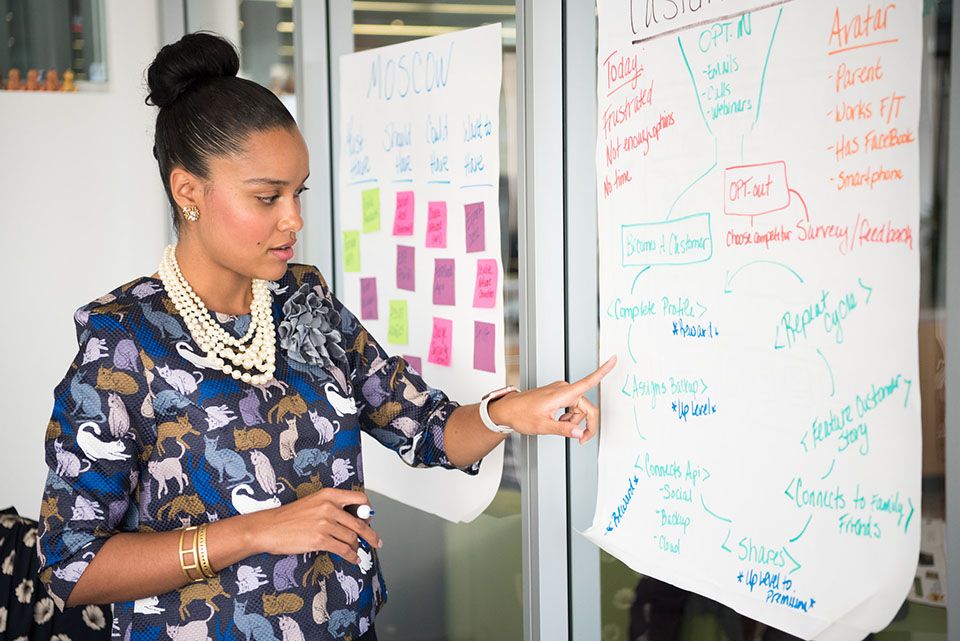By Tracy Tsai, PCC, CPC
In honor of International Women’s Day this month, we want to highlight the importance of gender equality in driving innovation across all industries. In today’s rapidly changing and competitive landscape, being innovative is more important than ever.
Innovation comes in many forms–for example, making improvements to a current process or product, introducing a novel idea, or creating an entirely new market. Companies that embrace innovation tend to be more adaptable, grow faster, and can differentiate themselves more clearly from the competition.
At Her New Standard, we believe that innovation can be maximized in organizations where gender equality and a culture of inclusion exist. In such cultures, team members are treated equally, and different perspectives are encouraged.
Why is this important when it comes to innovation?
Research by Deloitte supports this, noting that companies with inclusive cultures are six times more likely to be innovative and agile.
Conversely, organizations that lack systemic equality and a culture of inclusion don’t allow women to feel fully valued or heard. In these environments, women are less likely to take risks and share creative, out-of-the box solutions. When all team members are given the message that their viewpoints matter, and that it’s ok–and even encouraged–to disagree or challenge what’s been done in the past, innovation thrives.
What we see in our women’s leadership development programs at HNS is that women are more confident sharing their perspective with others when:
1) they feel valued by their organization and
2) they understand what their unique contribution to the organization is.
When these two ingredients exist, women tend to be more committed to speaking up and making sure that their voices are heard. That’s why we spend time in our 6-month Accelerate program helping women identify their strengths and passions, and importantly, link them to their organization’s specific needs.
Knowing this, how can companies foster an environment that’s more equitable, inclusive and ultimately, more innovative?

Empower employees
Leaders play a key role in creating an environment of empowerment. Research by the Harvard Business Review showed that leaders who are perceived as more empowering are more likely to ask for input, delegate authority and encourage autonomous decision-making. This encourages employees to generate new ideas and think of novel ways of doing things.
Employees who feel empowered tend to feel a greater sense of autonomy or control in their work, believe their job is aligned with their values, and feel competent in their abilities. So what does it take to empower employees?
- A key element of empowerment is trust. Therefore, companies with high-trust cultures offer an environment that is more likely to support empowerment and innovation. Neuroimaging research has shown that when employees think about a manager they trust, areas of the brain that correspond to positive emotions are activated. Companies whose leaders are able to foster a sense of trust tend to see increased employee satisfaction, engagement and innovation. Empowering leadership is also about developing employees and providing mentorship and/or sponsorship, as this creates trusting relationships.
- Accenture found that employees are empowered by a shared sense of purpose. When employees are clear on the purpose of their organization and how their own work aligns with it, they feel more empowered. Coupled with the sense of autonomy that comes from trusting relationships with managers and colleagues, employees are more likely to reach their individual potential and drive innovation. The study also showed that when companies provide employees with training, greater work flexibility and a commitment to work-life balance, they can drive an innovation mindset within the organization.

Create a safe environment to innovate
Mistakes and failures present opportunities for learning, which can then lead to even more innovative ideas. However, employees are often afraid to fail if they are in an environment that doesn’t subscribe to this growth mindset.
Interestingly, Accenture’s research shows that having a culture of equality can drive innovation because employees in these cultures are less afraid to fail. Absent an environment of equality and inclusion, non-majority groups feel under the microscope and are less likely to take the risk of presenting bold, new ideas.
This is extremely significant for women, as men and women are not treated equally when it comes to making mistakes. Women are often penalized more harshly for the same mistakes as compared to men.
For example, research from Harvard Business School showed that when female financial advisors make mistakes, they are 20% more likely to be fired for misconduct and 30% less likely to find another job in the industry, as compared to men.
This is also true in other industries. Another researcher at Harvard found that when female surgeons lose a patient, there is a 34% decline in their future referrals, versus no long-term decline in referrals for men who lose patients.
Knowing this, it’s imperative for organizations to be aware of the bias that exists and work towards creating a culture where all employees can feel safe enough to make mistakes and embrace the growth and learning that come from them. To do this, organizations must focus on creating environments where diversity of thought is welcome, creativity is valued over being “right” and unconventional ideas are considered with curiosity rather than shut down.

Encourage diverse voices
Leaders also play a role in creating equal opportunity for voices to be heard. Women often find themselves “talked over” in meetings, and this means that important points of view aren’t being heard. The larger the meeting size, the more the conversation tends to be dominated by a few individuals, making it even more difficult to contribute.
As a leader, when you see this happening, be a champion for the quieter voices in the room, making sure that all team members have a chance to participate. Here are a few ways to do this:
- Go around the virtual room and ask each person to weigh in on a decision or idea.
- You can also say, “Let’s hear from those who haven’t had a chance to contribute” then ask those who have been quiet to add their thoughts.
- Allow silence for introverted team members to formulate their thoughts and contribute. In addition, during one-on-one meetings with women on your team, ask if they feel like they are being heard, and if not, discuss how you can provide opportunities for them to speak up.
As a leader, your ability to listen and to foster open dialog with individual team members can also help to draw out those diverse voices. Research shows that managers who are approachable and engaged are able to create a culture where team members are comfortable sharing ideas and challenging one another.
In addition, research conducted by the Harvard Business Review showed that:

Commitment from leadership
A culture of equality and inclusion starts at the top. Senior management must be “bought in” to the case for equality, both from a business and moral perspective. Some things to consider:- Is equality and inclusion something that the leaders model everyday through their own actions, or is it just lip service?
- Has the company established metrics to measure their progress, and are leaders held accountable for the results?
- Is the effort given sufficient time and attention?
Innovation is crucial for success in our ever-shifting global economy, and gender equality is an important lever.
Companies can help foster gender equality–and ultimately greater innovation–by empowering employees to contribute to decision-making, ensuring that they feel safe proposing novel ideas and allowing every voice to be heard.
When leadership displays an ongoing commitment to making sure all employees feel respected and valued, the result is an inclusive workplace that’s both innovative and productive.
Interested in learning how HNS can support your women leaders?
Enjoyed this post? You might also like…




